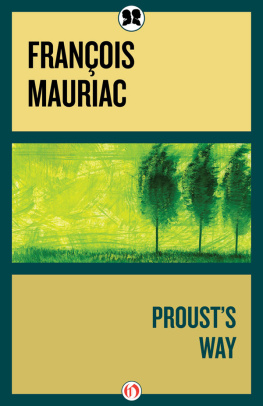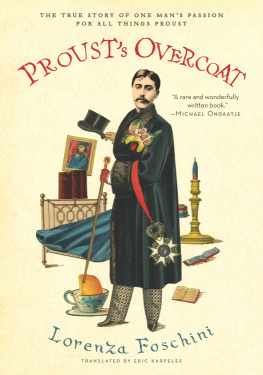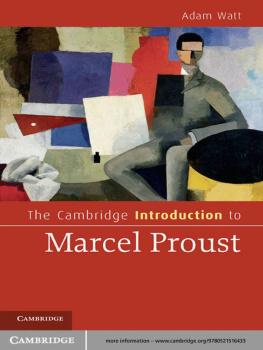
Proust and His Banker
Proust & HIS BANKER
IN SEARCH OF TIME SQUANDERED
Gian BALSAMO

2017 University of South Carolina
Published by the University of South Carolina Press
Columbia, South Carolina 29208
www.sc.edu/uscpress
26 25 24 23 22 21 20 19 18 17
10 9 8 7 6 5 4 3 2 1
Library of Congress Cataloging-in-Publication Data can be found at http://catalog.loc.gov/
ISBN 978-1-61117-736-7 (hardcover)
ISBN 978-1-61117-737-4 (ebook).
To my maestro di economia in Torino, Bruno Contini.
To my mathematical nemesis in Minneapolis, Tom Sargent.
And to you as always and everywhere, A. B.
CONTENTS
ILLUSTRATIONS AND FIGURES
ILLUSTRATIONS |
. | GIOVANNI BOLDINI,
LE COMTE ROBERT DE MONTESQUIOU (1897) |
. |
. |
. |
. |
. | MARCEL PROUSTS ROTHSCHILD PORTFOLIO
AT HIS DEATH. DECEMBER 31, 1922 |
. | MATRE REN BARILLOTS LETTER TO THE
ROTHSCHILD BROTHERS, JANUARY 31, 1923 |
FIGURES |
. |
. |
. |
PREMISE
Four years before his death, Marcel Proust was still a self-published novelist. Over the course of their fifteen-year-long collaboration, his financial advisor Lionel Hauser had seen him squander three-fifths of his wealth on reckless speculations and magnificent gifts to the men and women who struck his fancy. During World War I it fell upon Hauser to stem the damage. To Hauser, time was money: Proust wasted a great deal of both time and money, gambling on the stock exchange, whiling away his days in bed as he wrote about times ephemeral flow, or buying British cars, fabulous clothingeven an airplane!for Alfred Agostinelli, Henri Rochat, and other such heartthrobs. For the occasional jewel to the occasional girlfriend, he sought inspiration at Cartiers.
The banker could not know what you will learn from this book, namely, that time and money (and good health as well) were mere assets to Proust to be sacrificed to the success of his artwork. Hauser saw in the writer a foolish squanderer, a virtuoso in resource mismanagement. But Prousts worldview was different. Lost Time was not only, to him, a subject worthy writing about for a whole lifetime, but also the sextant of human existence, the measure of our adjustment to its transiency. He was willing to gamble everything on this idea, from the substantial wealth he inherited from his family to the scarce amount of time his poor health allowed him to devote to his artwork.
And in the long run, Lost Time showed him the right course of action. Meanwhile (if you dont mind my sticking with the figure of the sextant), Lost Money provided him with the orientation of a magnetic pole. Here is how.
Many of Prousts losses on the stock exchange inspired him to write vital episodes of his novel, In Search of Lost Time, or to fashion its most important characters. The futility of his conspicuous expenses on Agostinelli and Rochat, for instance, gave birth to his best female character, the pink-tongued and fat-cheeked Albertine Simonet, whose cagey behavior filled him, her creator, with real jealousy, and whose premature death filled him with true grief. Another source of inspiration for Albertine Simonet sprouted from Prousts assiduous courtship of the stunning yet untalented actress Louisa de Mornand, met in a brothel, who figured, on at least one occasion, as his sexual partner inhow shall I put it?a narcoleptic sort of intercourse. The inspiration Proust drew from Louisa de Mornand more than rewarded him for the large amounts of time, money, and personal influence (and personal embarrassment as well, on occasion) which he devoted to the success of her acting career. In addition, the most irresponsible of Prousts financial speculations became the risky investments made by his novels protagonist to cover the costs for turning Albertine, the acerbic beach nymph, into his urban captive, a refined woman of fashionan undertaking which eventually left him with barely one fifth of his original patrimony (versus the two-fifths left Proust in real life during World War I).
With Proust, in sum, waste was the renewable resource that kept on giving. Im sure I wont be getting ahead of myself if I pitch in some more evidence.
The long years that Proust squandered as an unemployed aesthete and underachieving homme du monde helped him give shape to the character that made his initial fame as a best-selling author: Charles Swann, an amateur and procrastinating art critic who was also modeled on the real-life Charles Haas, a gentleman for whom lack of an occupation was a matter of principle. It is because of his dandified and ineffectual erudition as an art historian that Charles Swann is welcome in the same aristocratic circles, well above his familys standing, that were frequented by the idle would-be writer Marcel Proust. Even Charles Swanns marriage to the courtesan Odette de Crcy, so out-of-character and ruinous to his reputation, is redolent of asset mismanagement. Unable to endure Odettes infidelities or his own undignified, nagging jealousy of her, Swann weds her. And, promptly, their domestic mnage portrays, in Prousts novel, the pecuniary arrangement worthy of people who, like the banker Lionel Hauser, deal with passion and devotion in the spirit of accountants. Based on the way Proust rated Hausers tolerance of his erotic drives in the summer of 1918, one could say that Swann, the former ladies man, joins eventually the ranks of loves bookkeepersa sort of blunder for which his creator refused to be a model.
The character of Odette de Crcy, who makes a career out of her Botticellian beauty, and is second in importance, among the female characters of Prousts novel, only to Albertine Simonet, was modeled on Prousts association with exclusive demi-mondaines, or kept-women, a costly milieu which Hauser warned him against. Since the time he was a boy, Proust was on intimate terms with Laure Hayman, who enjoyed the keen insights of her languid young friendher little psychologist in porcelain, as she called himand is by turns, on the more prosaic business side, the lover of his maternal great-uncle Louis Weil and almost certainly of his father Adrien. Marcel Proust paid her frequent visits at her address in Rue La Prouse, near the Arc de Triomphe. She was not too pleased when she read in Prousts novel that, before her marriage, the courtesan Odette de Crcy used to live in Rue Laperouse.
Not even the financial disaster of World War I, which took away a good chunk of Prousts fortune, was detrimental to his art: the nocturnal air raids of the infamous German zeppelins turned the pitch-black passageways of the Parisian metro into a dark city, a Sodom of sorts, where his impenitent Baron de Charlus hunts for African soldiers in red skirts and Hindu soldiers in white turbans; and in the masculine solidarity of trench war, his protagonists devoted friend Robert de Saint-Loup, a junior cavalry officer, discovers a curious blend of lower-class eroticism and heroic patriotism.
In 1919 an astute publisher, Gaston Gallimard, seized the opportunity to convert hundreds of pages of chaotic scribbling into Prousts best-sellerand in the process Gallimard became the unchallenged doyen of literary publishing in France. On top of it all, one of Prousts longest-term and sneakiest investments produced unhoped-for results after the war. Although Hauser had grown used to Prousts comparison of certain securities in his portfolio with old mistresses, prone either to unreasonable claims or unexpected handouts, he is kept mostly in the dark regarding his friends substantial packet of shares of Royal Dutch, the progenitor of Shell; from 1919 to the year of the writers death, 1922, these securities counted among the writers steadiest and most generous mistresses on the stock exchange.
Next page












